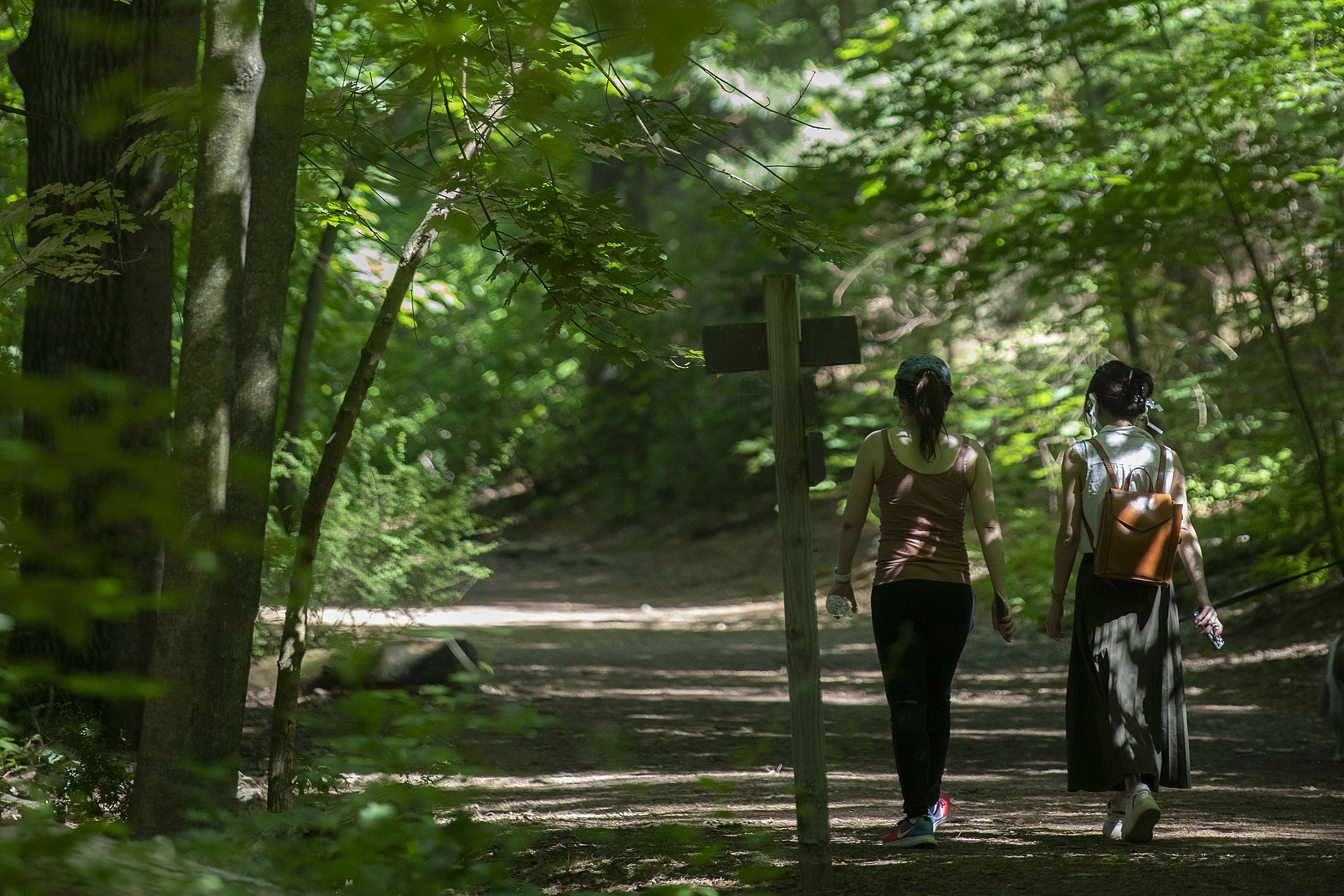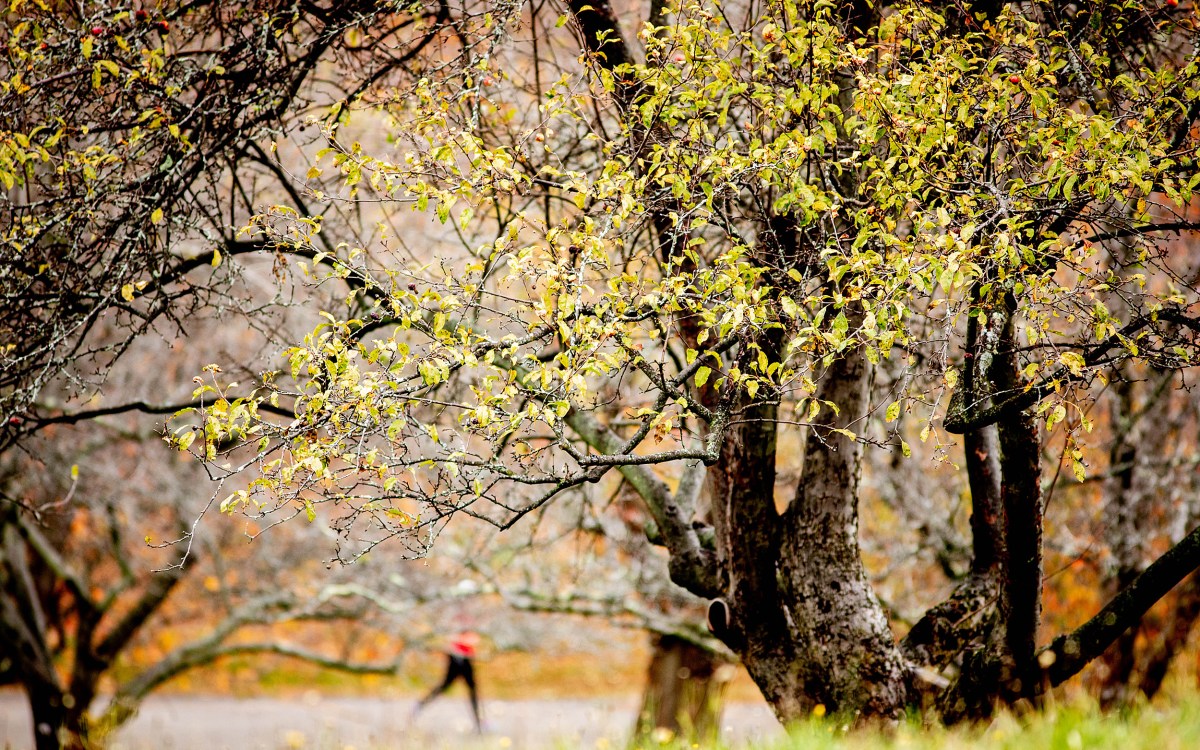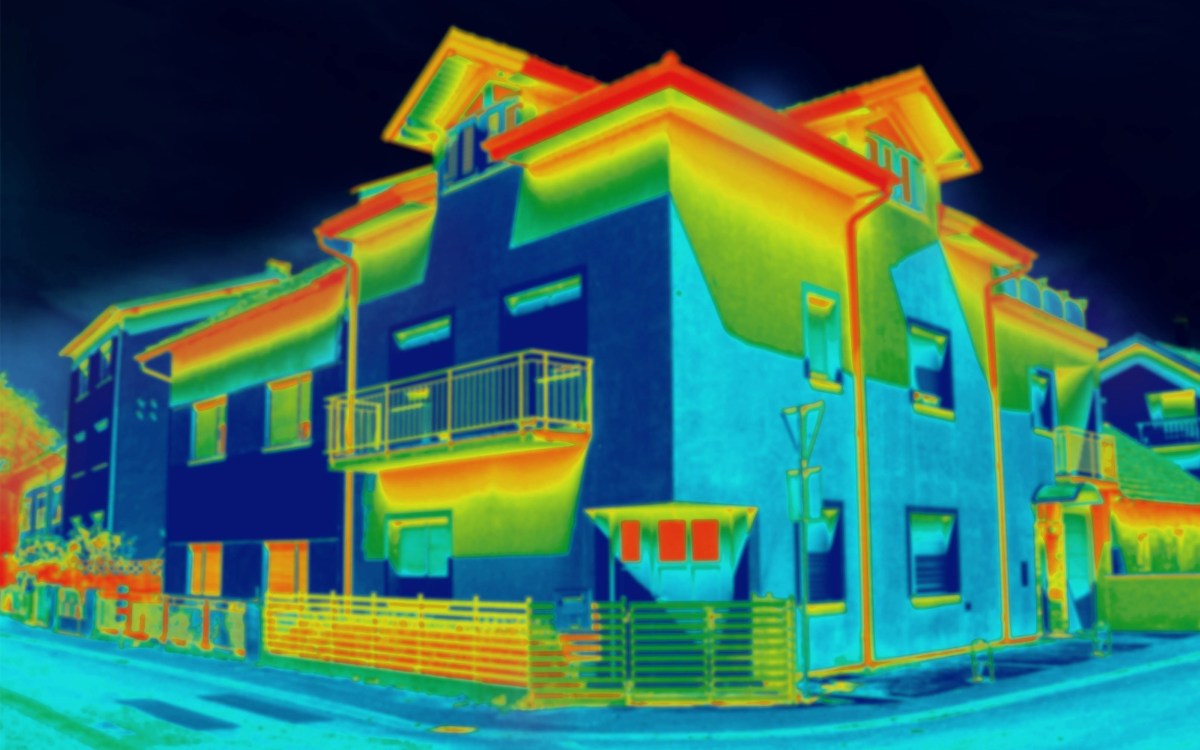
Kris Snibbe/Harvard Staff Photographer
Investing in a sustainable future
Climate Change Solutions Fund grants bet on new ideas for the next generation
An octet of grants awarded just weeks before the COVID-19 crisis closed Harvard’s gates are beginning to show the fruits of the research for which they paid. The projects, which leverage the unique expertise of Harvard faculty and students in science, engineering, design, health, business, and law, shared $1 million in the sixth round of Climate Change Solutions Fund (CCSF) awards.
“Harvard has made significant progress toward reducing emissions, improving health in the built environment, and shaping policies and industries in pursuit of a more sustainable future,” Harvard President Larry Bacow said on July 10, when the grants were announced. “Our goals — a fossil-fuel-neutral campus by 2026 and fossil-fuel-free campus by 2050 — are within our reach because our dedicated researchers and scholars are advancing knowledge and driving progress that connects and amplifies all of our sustainability efforts.”
“The CCSF Review Committee and I are thrilled to announce this year’s awards,” said Vice Provost for Research Richard McCullough, whose office administers the fund. “With support from the University and generosity from alumni and others, CCSF is able to continually fund this critical work focused on global climate and health challenges. The concepts, innovations, and discoveries generated by our faculty and students reflects Harvard’s ongoing and strong commitment to reduce the risks of climate change.”
President Emerita Drew Faust established the fund in 2014 to shape and accelerate Harvard’s transition from nonrenewable sources to a sustainable energy system. This year’s projects support research at the vanguard of energy and climate science in areas such as environmental policy, evolutionary biology, public health, data and computational materials science, physics, and more.
Each year the fund review committee targets innovative research projects at Harvard’s 12 Schools, giving special consideration to those that use the campus as a living laboratory. Eligible projects test ideas that address global sustainability challenges and align with the priorities in the University’s Sustainability Plan and the climate goals outlined by Harvard’s Presidential Committee on Sustainability and the Office for Sustainability. To date, 50 CCSF projects have received more than $6 million. The fund is supported by the President’s office and donations from alumni and others.
The early awards this year let grant recipients begin their work in advance of closures due to the global pandemic. This year’s winning projects are summarized below. The application process for next year’s awards are open and will close later this month. Interested applicants should contact vpr_grants@harvard.edu.
Liquid-Infused Encapsulations
Joanna Aizenberg, Amy Smith Berylson Professor of Materials Science and professor of chemistry and chemical biology, Faculty of Arts and Sciences (FAS)
Aizenberg’s project will investigate a conceptually new encapsulation platform based on a hydrophobic liquid-infused polymer matrix. If successful, it will greatly extend the lifetime of solar cells that use halide perovskite — an ionic compound able to make the lowest-cost, highest-efficiency thin film solar cells — to establish a widely applicable platform, and provide better understanding for the broad design and applications of liquid-infused materials.
Technology Transitions and Timing Environmental Policy
Sarah Armitage, Ph.D. candidate in political economy and government, FAS
Armitage will analyze how the trajectory of clean technology development interacts with the types and timing of policies. She will analyze how incentivizing deployment of earlier-generation clean technologies affects the long-run transition from dirty technologies by studying the market for efficient lighting, where highly efficient light emitting diodes (LEDs) have competed with both compact fluorescent lighting and halogen lights. Armitage will build a model to understand substitution patterns across lighting technologies and simulate the development of an efficient lighting market given different policy scenarios. The goal is to guide how policymakers think about policy tradeoffs over time.
Cold-SNAP: Cooling Your Building Without Heating Our World
Martin Bechthold, director of the Doctor of Design Studies Program and the Master in Design Engineering Program, Kumagai Professor of Architectural Technology, Graduate School of Design, with co-investigators Joanna Aizenberg, Amy Smith Berylson Professor of Materials Science and Professor of Chemistry and Chemical Biology (FAS/SEAS); Jack Alvarenga, research scientist at the Wyss Institute; and Jonathan Grinham, Lecturer in Architecture and research associate (GSD)
Bechthold intends to build a better air conditioner by developing co-extrusion ceramic manufacturing methods using a retrofittable, high-efficiency indirect evaporative cooling (IEC) system for residential and commercial buildings in hot-dry and hot-humid climates. Preliminary work has shown that cold-SNAP IEC systems can achieve high cooling capacity with no added moisture and low system energy. The funding from the CCSF will help enable next-generation IEC systems and facilitate a full-scale pilot program with a ceramic manufacturer and potential industry stakeholders.
Data Science for Climate Change
Francesca Dominici, Clarence James Gamble Professor of Biostatistics, Population and Data Science and co-director of the Data Science Initiative, Harvard T.H. Chan School of Public Health, and co-investigator Danielle Braun, research scientist in the Department of Biostatistics at the Chan School and at the Dana-Farber Cancer Institute
Dominici and Braun want to accelerate access to harmonized, linked data on climate change exposures, health outcomes, and other important variables such as behavior and economics in order to inform policy. Their project will build a research data platform that is accessible to faculty, postdocs, and students across multiple fields and provides concrete and actionable climate change solutions, backed by findings from at least 25 different government databases. The platform has been tested using their research on air pollution, and Dominici and Braun will routinely update it to keep data current and relevant and help users analyze data to mitigate the health consequences of climate change.
Using Thermoelectric Materials to Advance Computations
Boris Kozinsky, associate professor of computational materials science, Harvard John A. Paulson School of Engineering and Applied Sciences
To recover some of the 72 percent of global primary energy that is lost after conversion, Kozinsky intends to use thermoelectric (TE) devices to convert temperature gradients to electrical voltage. His project will automate computational and machine learning to rapidly discover and optimize new classes of TE materials, smoothing the way for commercialization of efficient solid-state cooling and waste-heat-recovery technologies. If successful, this project will advance rapid computation of electrical and thermal transport properties and guide discovery in a wide range of technologies, including electronic, sensors, phase change materials, and batteries.
Assessing Climate-Change Mitigation Potential for Tropical Forests
Paul Moorcroft, professor of organismic and evolutionary biology, FAS
Because the structure of its canopy is a strong determinant of the rate at which a forest takes up and stores carbon, accurate quantification of forest canopy structure is essential for success of forest preservation and restoration programs, as well as broader mitigation efforts. NASA has recently successfully installed a waveform lidar, known as the Global Ecosystem Dynamics Investigation (GEDI), onto the International Space Station that can predict a forest’s rates of carbon uptake and storage. Moorcroft’s project incorporates GEDI’s measurements to determine the global-scale pattern of tropical forest structure, as well as associated current and future rates of tropical forest carbon uptake and storage. The project will initially focus on the Amazon, and then extend to Asian and African tropical forests.
Trees to Bear Witness
Tim Rademacher, Visiting Postdoctoral Fellow, Department of Organismic & Evolutionary Biology, FAS; Clarisse Hart, director of outreach and education, Harvard Forest; Flossie Chua, project director at Project Zero (GSE)
Social media campaigns can stimulate conservations, change attitudes, and even increase pro-environmental behavior. Since its launch in the summer of 2019, the Witness Tree project has used a century-old oak tree at Harvard Forest as a local ambassador for environmental change. A team of undergraduates, led by a postdoctoral fellow, installed sensors on one red oak, equipping the tree to post messages to Twitter and Facebook about its growth, seasonal change, and climate-related factors. The CCSF funding will pay for three additional Witness Tree kits to be installed at the Arnold Arboretum and two K-12 schools in Massachusetts. The Witness Tree team will explore the climate research potential of these eco-physiological networks and assess the network’s climate communication impact using qualitative and quantitative measures of public engagement.
A new approach for removing atmospheric carbon dioxide
David Weitz, Mallinckrodt Professor of Physics and Applied Physics, School of Engineering and Applied Sciences, with co-investigators Michael Aziz, Gene and Tracy Sykes Professor of Materials and Energy Technologies (SEAS); Daniel Schrag, Sturgis Hooper Professor of Geology; Professor of Environmental Science and Engineering; director, Harvard University Center for the Environment; Co-Director, Science, Technology, and Public Policy Program (FAS/HKS)
To avoid the worst effects of climate change, humankind must not only avoid adding to levels of carbon dioxide emissions, it must remove existing CO2 from the atmosphere. The class of technologies known as direct air capture (DAC) may one of the promising routes forward, but current DAC technologies are still considered too costly and difficult. Weitz’s project evaluates a new approach, the Alkalinity Concentration Swing, which reversibly cycles the concentration of the captured CO2 and the positive ions that control its solution properties. Weitz believes that this approach is both more efficient and less expensive, and will enable CDR at a scale that can make a difference to levels of climate change.







